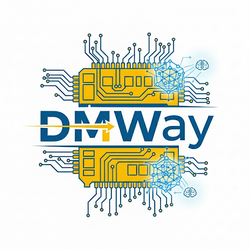
DMWay, the data flow management middleware developed by CETIC, is used in several of its projects to facilitate the integration of IoT systems. It ensures connectivity for both data sources (sensors, equipment) and user backend applications.
As part of a continuous improvement initiative, a study was conducted within the ARIAC project to evaluate how DMWay can provide significant added value in the field of Edge AI, particularly in the industrial sector where connectivity demands are notably high.
Date: 26 August 2025
Domains
Innovation themes
Asset
About project
Author
The objective is to examine how DMWay, as a central component of an Edge AI architecture, can drive the execution of neural network inferences based on events, similar to what is done in a control sequence on an assembly line.
Therefore, DMWay’s task orchestration capabilities, which complement its connectivity functions, will be leveraged to implement this control process. This study represents a crucial first step for DMWay to pilot neural inferences. It is being conducted using its current version, without any prior modifications to the middleware.
However, in order to take into account a realistic context it’s also necessary to consider the technological constraints associated with system implementation, especially regarding the processing resources required for executing artificial intelligence inferences. Indeed, the limited computational power of embedded systems is one of the main technical challenges in designing an Edge AI architecture. Many applications, particularly in computer vision, demand high processing capabilities.
SoC-FPGAs are particularly well-suited for embedded AI applications because they combine the performance of dedicated hardware thanks to programmable logic, with the flexibility of software running on a processor.
Among SoC-FPGA manufacturers, AMD provides the DPU-PYNQ environment to facilitate development. This environment consists of an Ubuntu Linux distribution enhanced with FPGA control drivers and Python libraries (Hardware Overlay API and PS-PL interfaces). Additionally, it includes the DPU (Deep Learning Processor Unit), a proprietary AMD IP designed as a hardware-optimised coprocessor for accelerated execution of convolutional neural networks on FPGAs.
This environment is ideal for rapid prototyping, simplifying the development of test applications as Python scripts using Jupyter notebooks.

It is well-suited for implementing computer vision applications, such as automated optical inspection on an assembly line. This type of application, which relies on image analysis by convolutional neural networks (CNNs), is a typical use case in the manufacturing industry.
A weld defect detection scenario for two aluminium tubes was developed to illustrate this industrial production control.

The production line is illustrated with images of welded tubes, as they would be captured by a camera mounted above a conveyor belt transporting the tubes.
Each image is analysed in two steps using neural networks:
The entire system is deployed on an AMD KV260 board, which features a Zynq UltraScale+ SoC-FPGA. This board performs the image analysis using Yolo and ResNet neural networks, while also managing the control process sequence. A dashboard, developed with ThingsBoard, provides a visualization of sample status and allows for commands and parameters to be transmitted to the board.
The software architecture is built upon two primary components. On one side is DMWay, responsible for orchestrating the execution of the different steps within the control sequence. On the other side is a dedicated application designed to activate the AI model according to these steps. Thus, DMWay sends commands to the application, according to results provided by neural networks and instructions received from the dashboard. These two software components are executed within separate processes, communicating through a common shared memory mechanism.
The developments primarily focused on the application itself:
The simplicity of this architecture is further enhanced by DMWay’s flexible configuration capabilities. Its graphical web interface allows for designing an IoT architecture using interconnected functional modules. This modular approach applies to both communication interfaces and task orchestration, enabling code execution to be triggered in response to events.
Similarly, regarding programmable logic, using the DPU simplifies the execution of Yolo and ResNet models. Furthermore, the example projects available on AMD’s GitHub greatly simplify getting started with them.
This initial development has concretely demonstrated DMWay’s ability to interface with AI processes, resulting in a simple software architecture that is easily adaptable to real-world implementation scenarios:
Furthermore, the implementation of DMWay on a SoC-FPGA platform represents a significant step forward, expanding its deployment possibilities on various embedded technologies.
These results open up promising use-cases for DMWay in the field of Edge AI. Coupled with enterprise resource planning (ERP, MES, etc.) systems, Edge AI helps improve overall company profitability by facilitating the optimisation of industrial processes such as production planning and supply chain management.
It’s in this environment that DMWay truly reveals its potential as a dataflow management platform, routing data from the production line to AI processing while ensuring the interface with the company’s enterprise systems for enhanced productivity.

Interested in learning more about the capabilities of DMWay middleware, especially on connectivity and Edge IA, or seeing it implemented in a live demonstrator?
Do not hesitate: